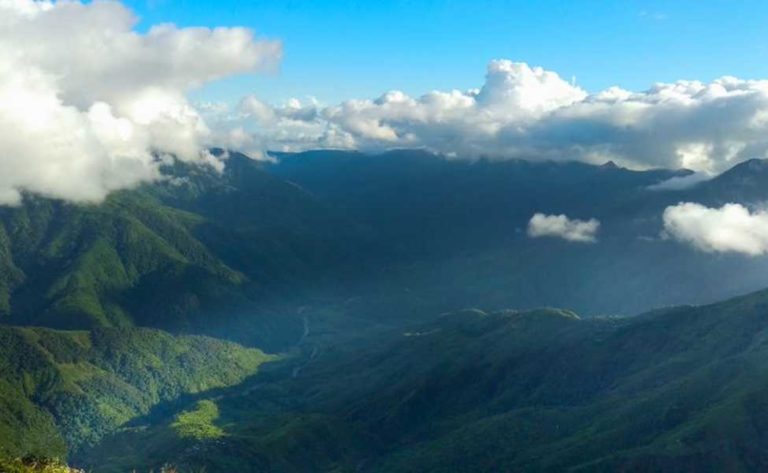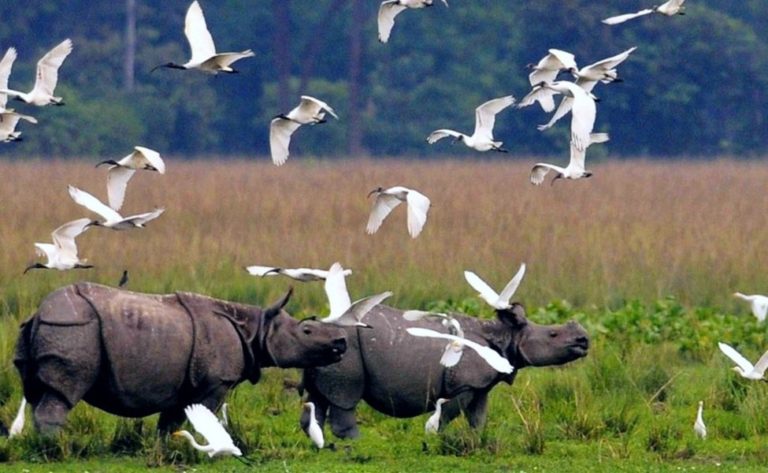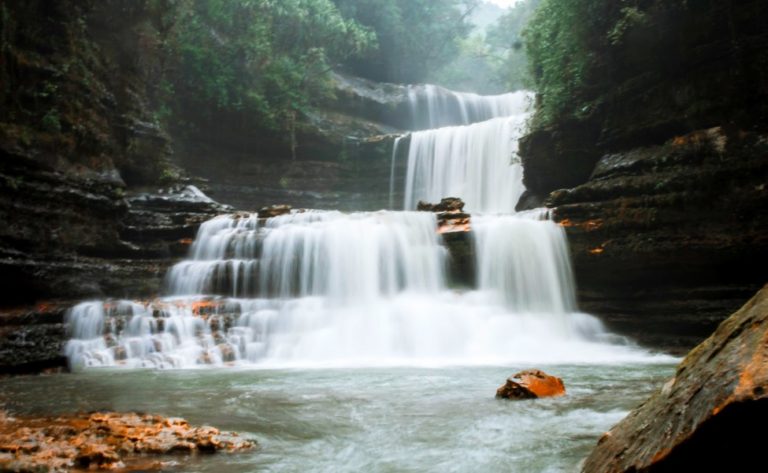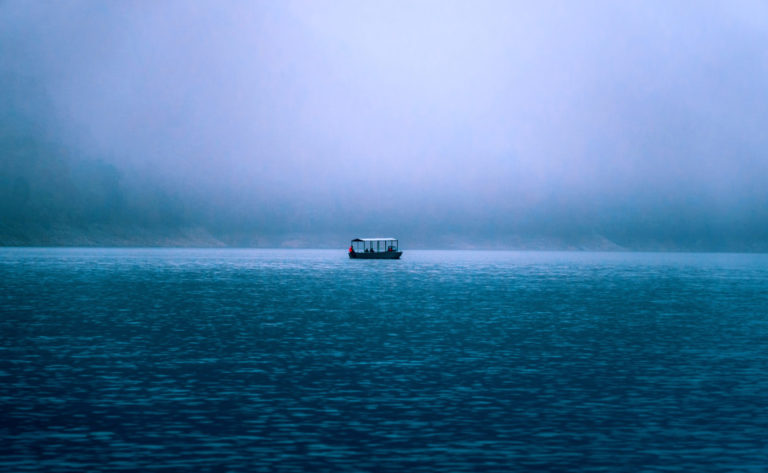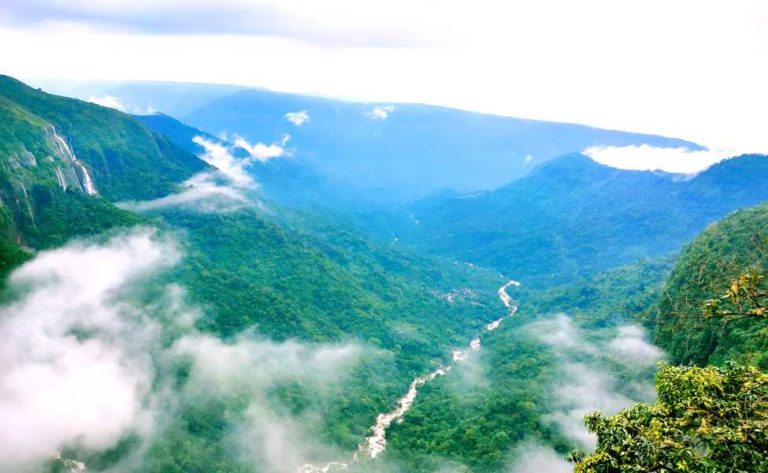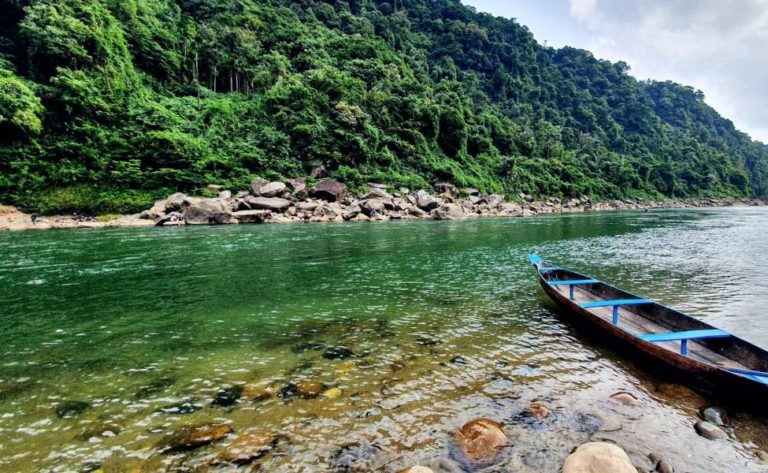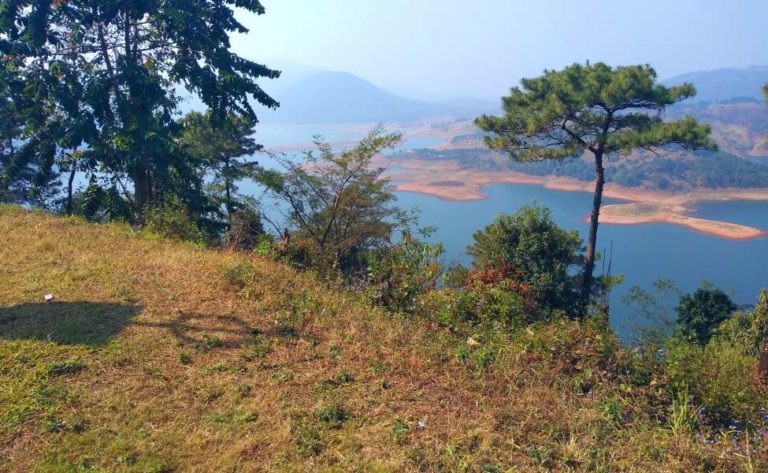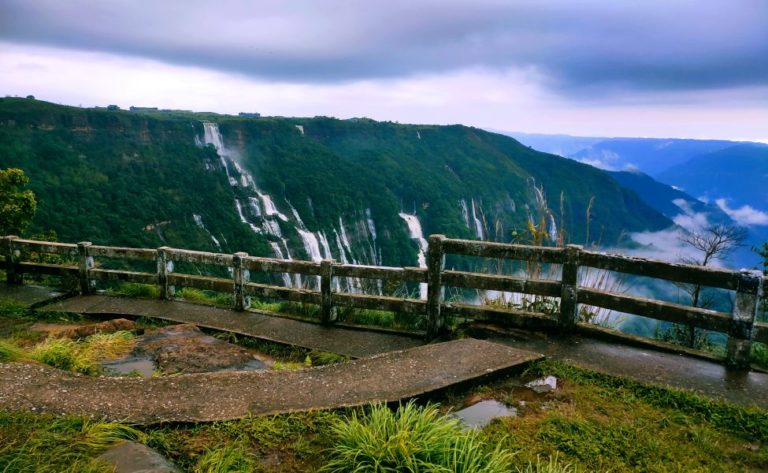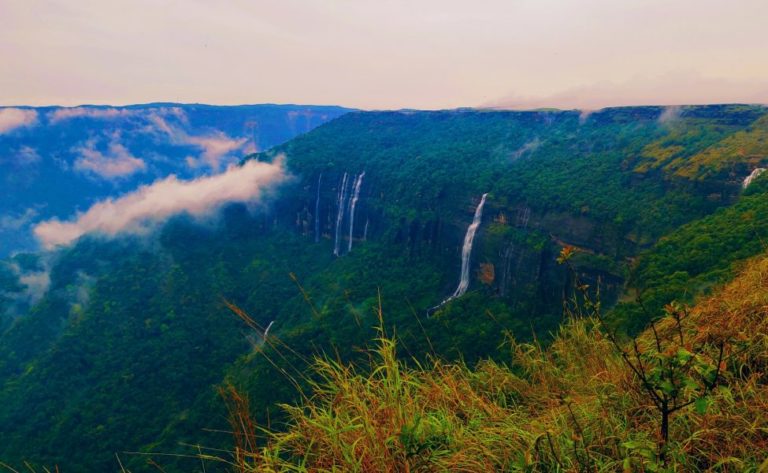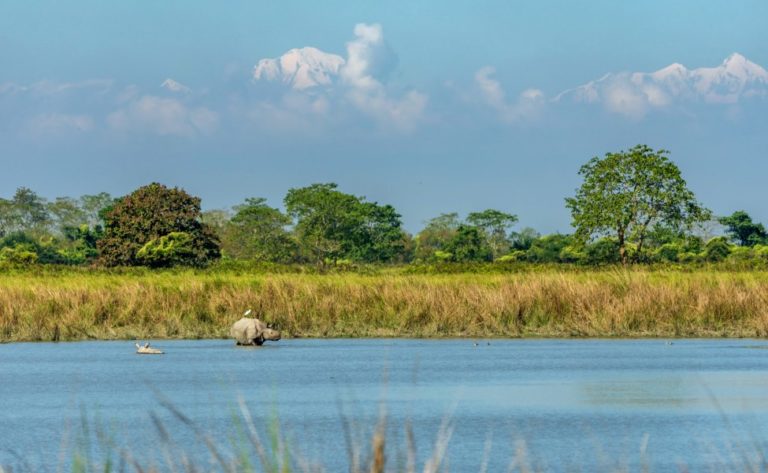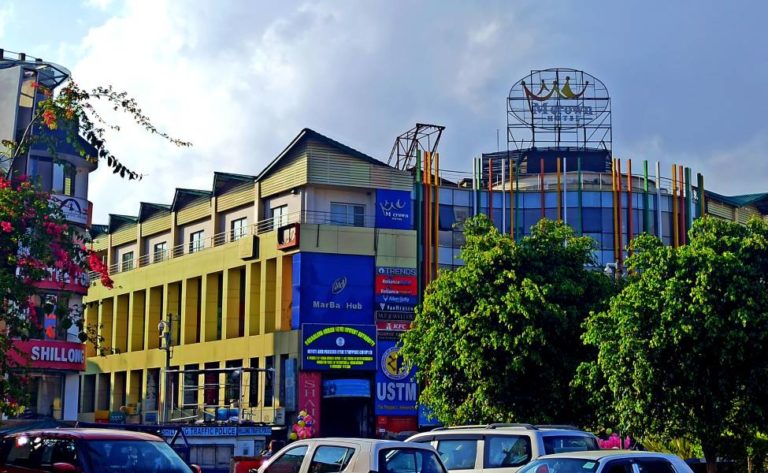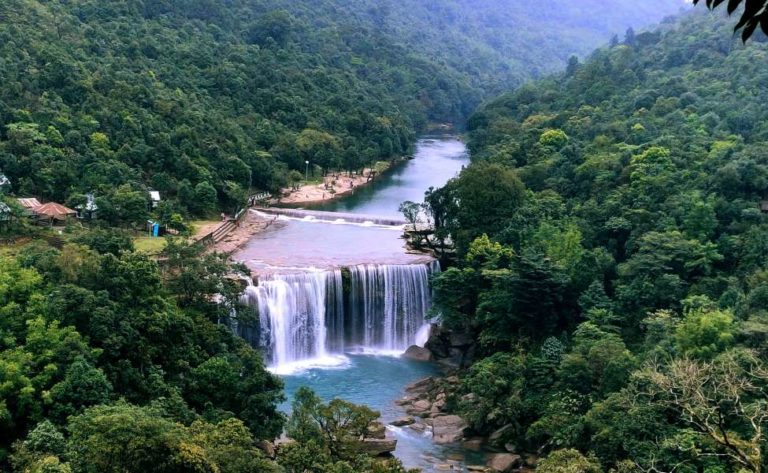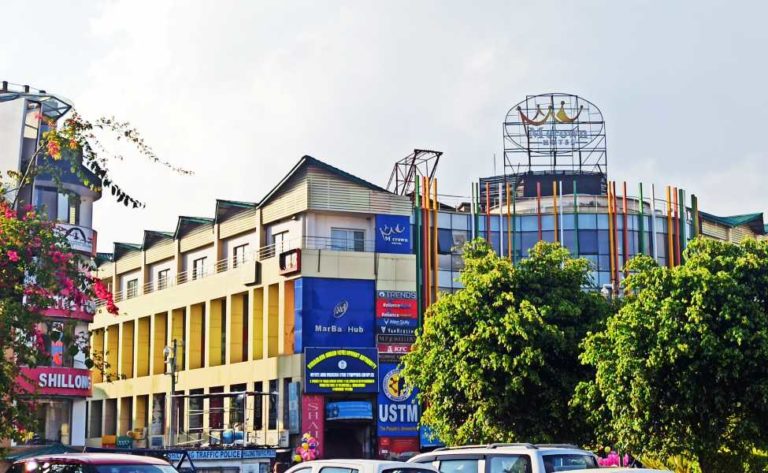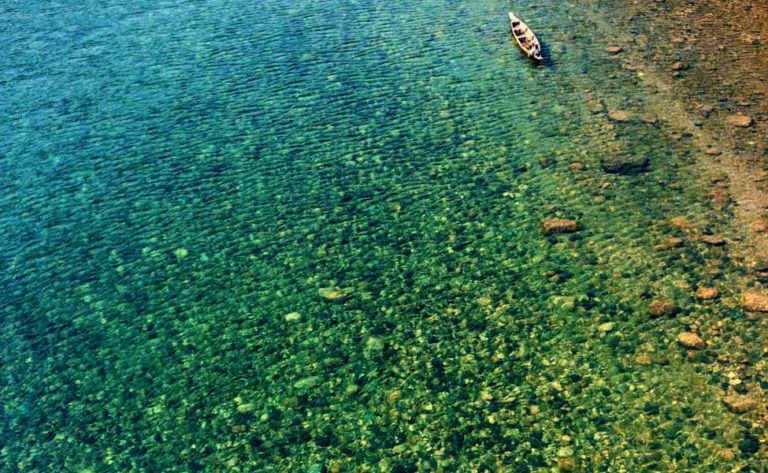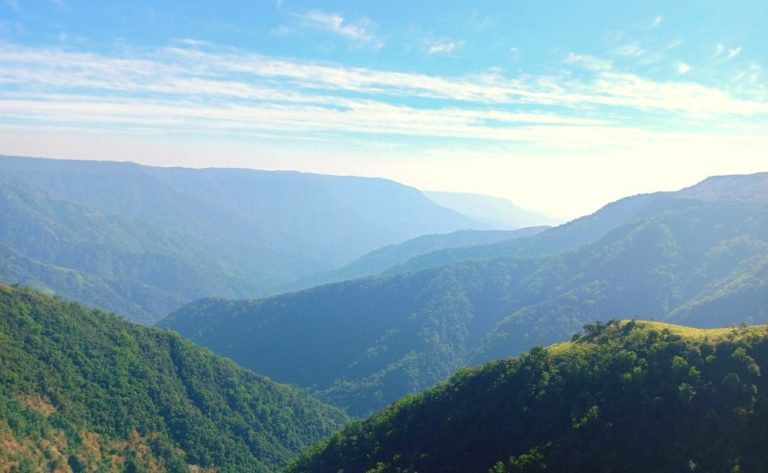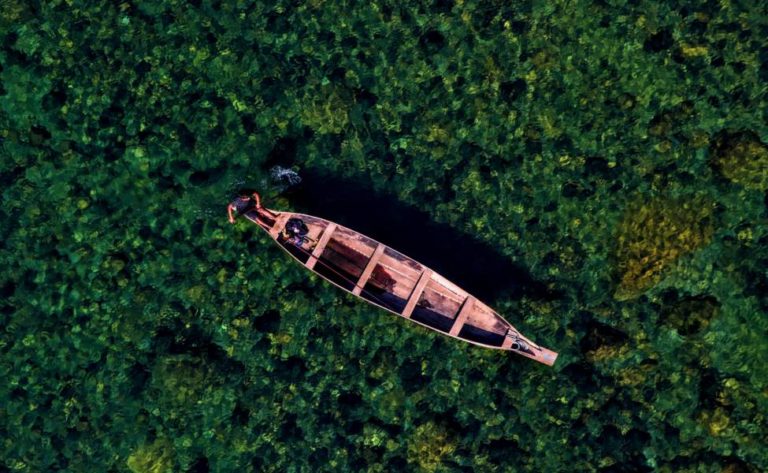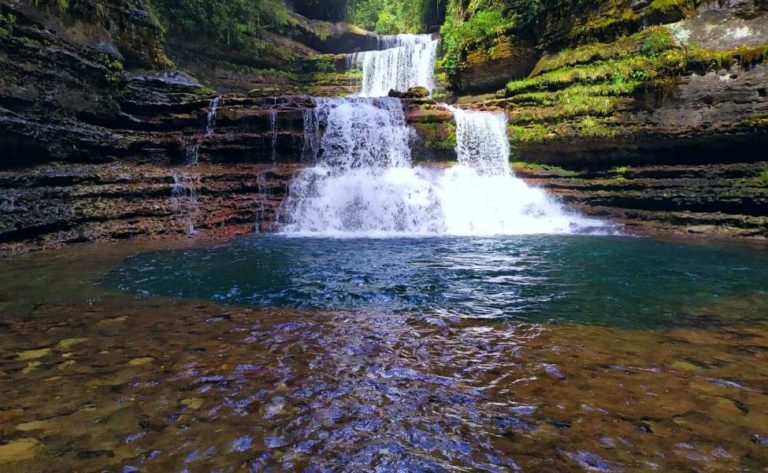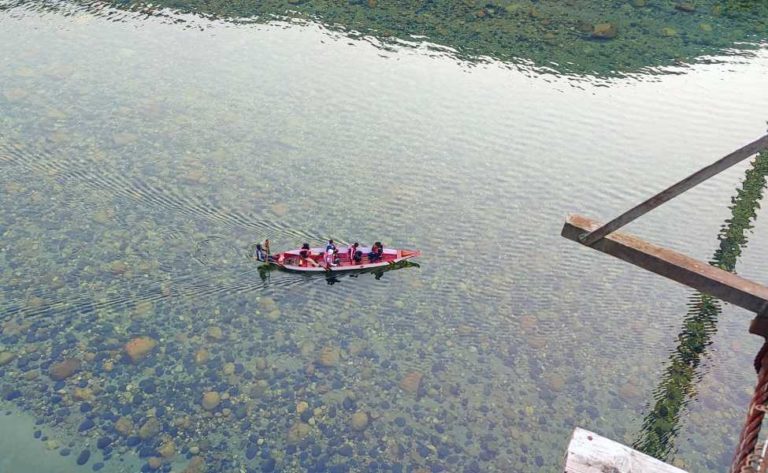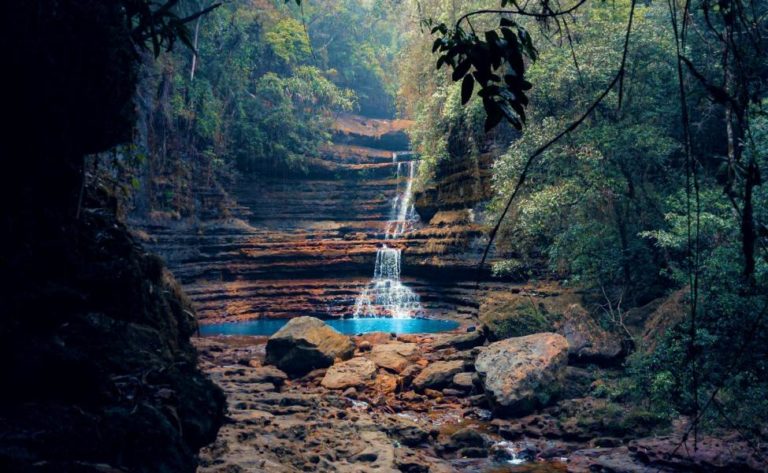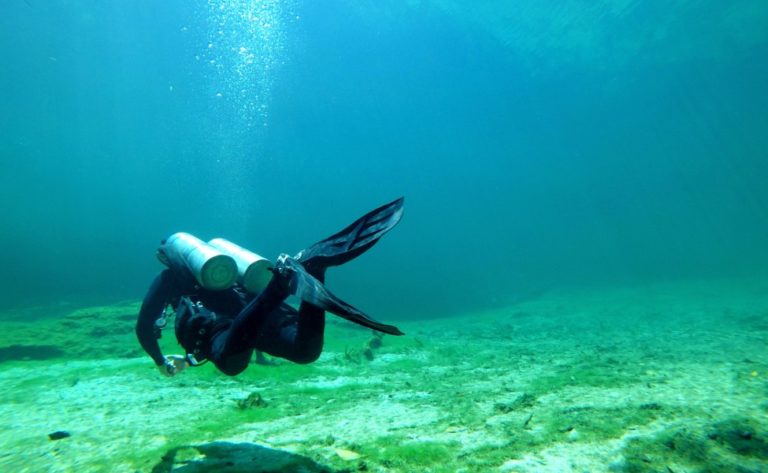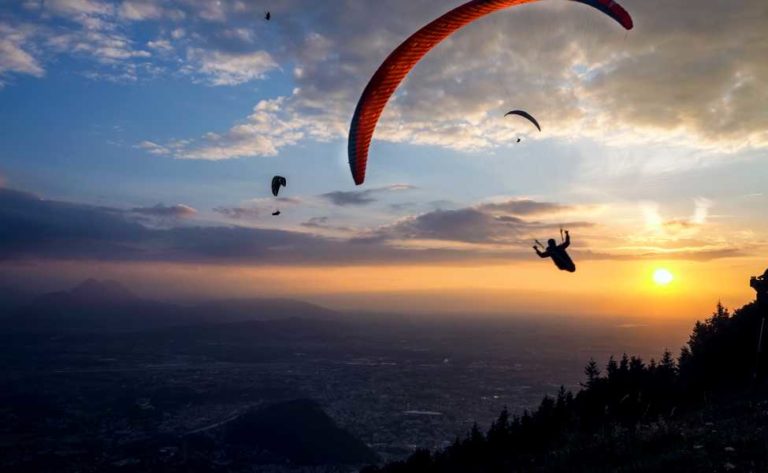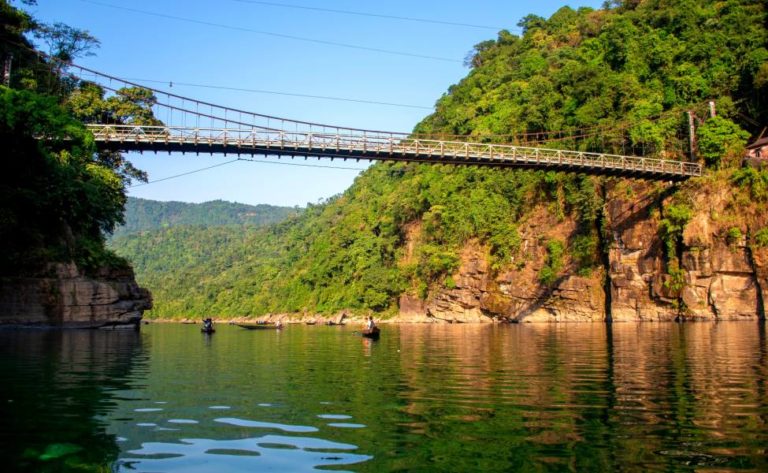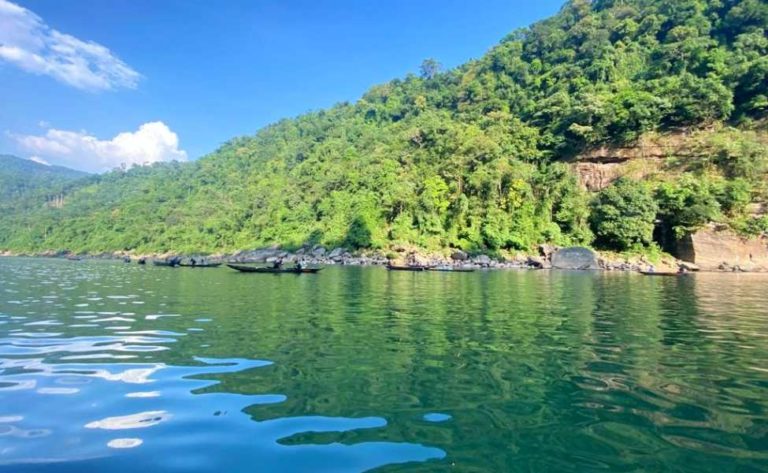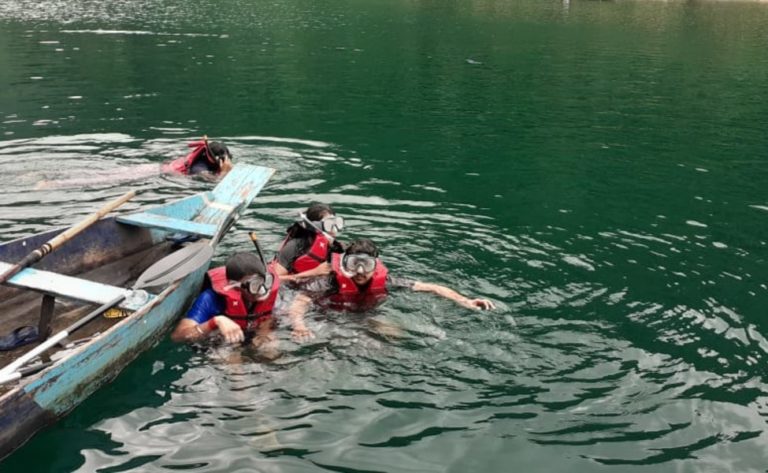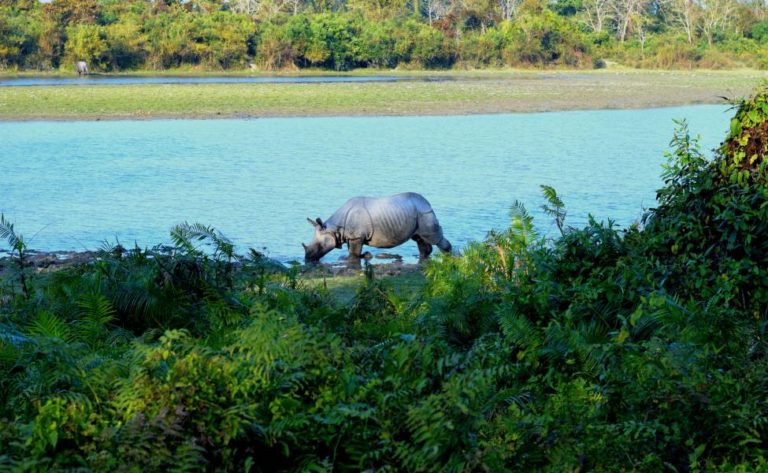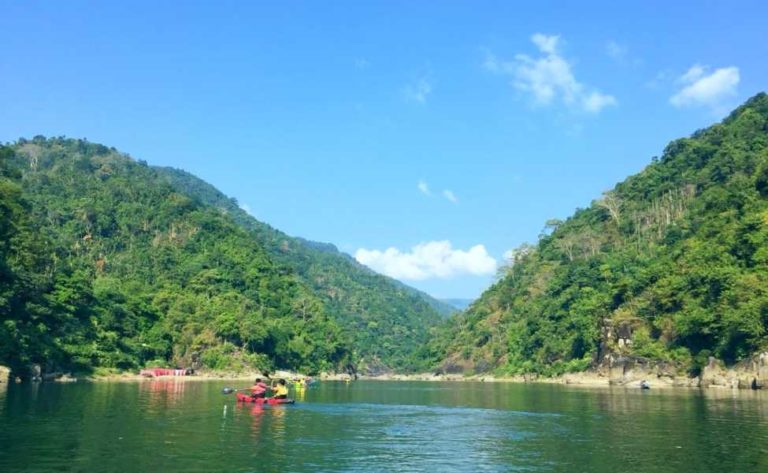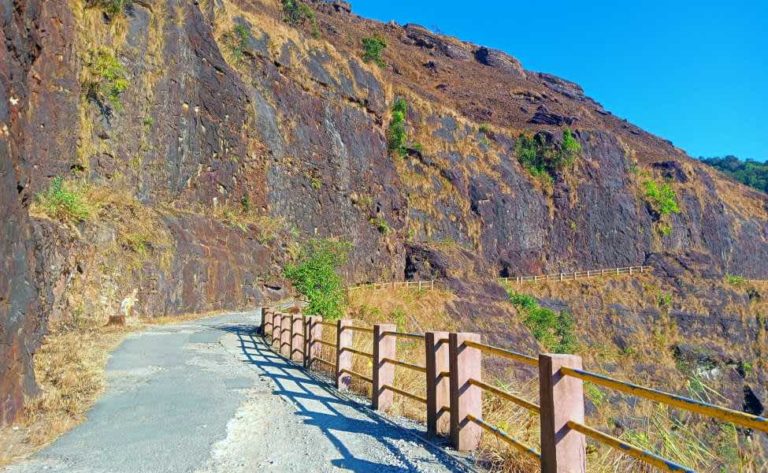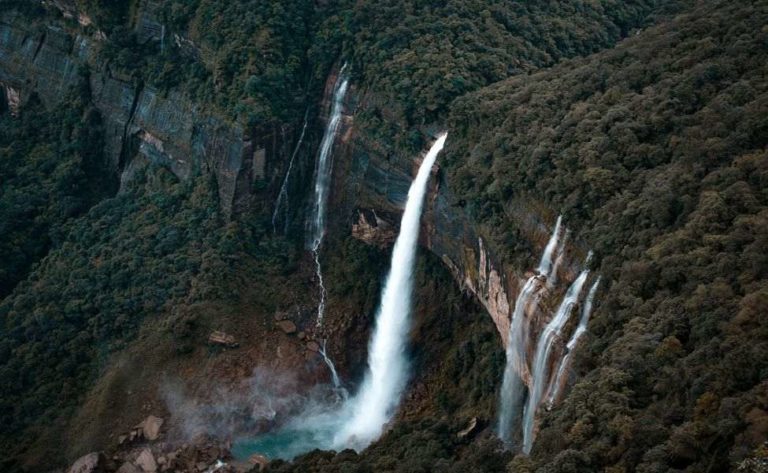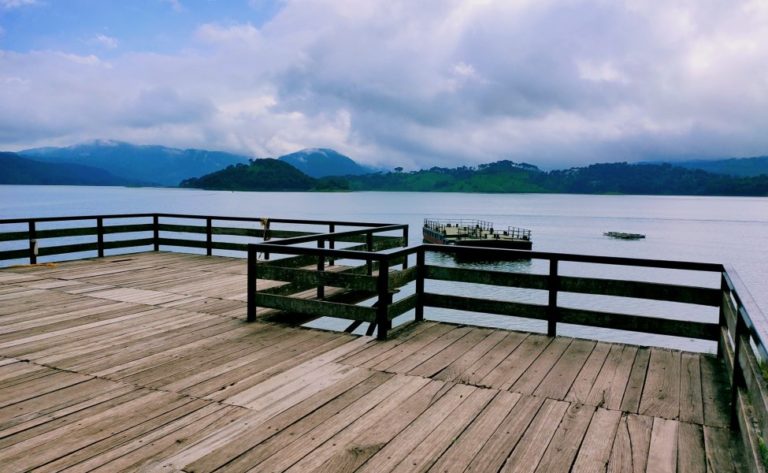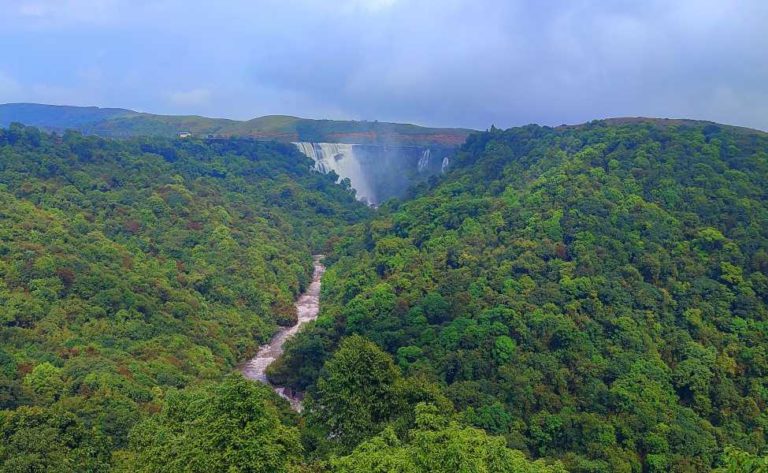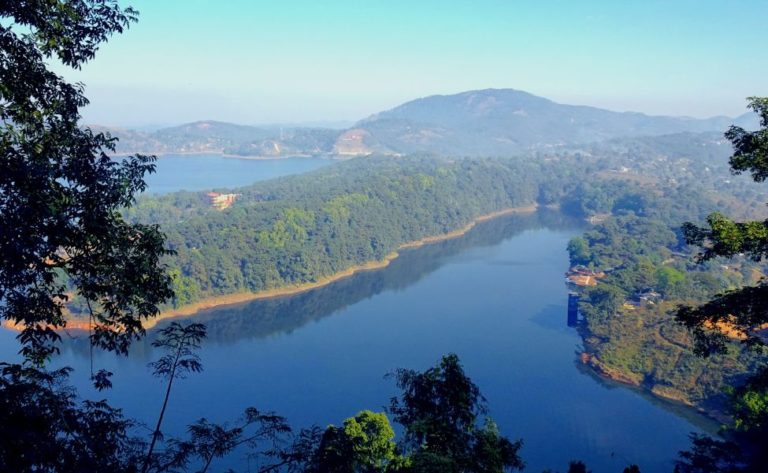
Majuli Tourism – A Perfect Travel Guide, 2023
Majuli Tourism
Majuli, a riverine island of Brahmaputra River, is the first island to be made a state district in the country. Majuli is considered to be one of the largest river islands in the world as of 2016. But the island area is declining because of the erosion effect of the river. It is struggling to find a place in the UNESCO World Heritage Site from 2016. The island has been created by the amalgamation of three rivers which are the Brahmaputra, Subansiri and Kherkutia Xuti. The distance of Majuli from Guwahati is 342 km and it is accessible by ferry from Jorhat. According to documented accounts of the visit of social reformer Srimanta Sankardeva in the 16th century, Majuli has been the centre of Assamese culture since that time. Sankardeva, a forerunner of the Neo-Vaishnavite movement of the Middle Ages, taught Vaishnavism, a monotheistic version of Hinduism, and founded Satra (monasteries and hermitages) on the isle. After the establishment of the Satras, Majuli became a centre point of Vaishnavism in the region. Mishing, Assamese and Deori languages are mostly spoken here. Raas Purnima is a major cultural festival of this region and witnesses a huge gathering from around the country.
Majuli offers a serene and blissful atmosphere away from the hustle and bustle of everyday city life. It’s one of a kind riverine island surrounded by the mighty river Brahmaputra and it provides a tranquil atmosphere where one can get some peace of mind and soul.
What makes Majuli so famous?
One of Assam’s top tourist attractions is Majuli, a mysterious location rich in history and culture. Majuli is not just the largest river island in the world; it also serves as Assam’s centre for neo-Vaishnavism. Even though being modest, Majuli tourism is vibrant. The Satras provide the region its cultural uniqueness, while the majestic Brahmaputra enriches its natural grandeur. One of the most important ancient Indian dance forms, Sattriya dance, is practised in the Satras, where Vaishavinism is not only taught and propagated but also where it originated. Moreover, these satras produce masks, which is a distinctive aspect of Assamese culture. They use the masks as a mode to convey the cultural heritage of Assam through storytelling.
Best time to visit Majuli
Majuli has a very tropical warm environment with long monsoons. The winters are notably cold and pleasant even though the summers are hot and muggy. The Raas Purnima, which falls on the full moon in November, is the ideal time to visit Majuli. The temperature is still pleasant and ideal for leisurely outdoor activities. Here, the summers are quite uncomfortable due to the humidity and heavy rain that finally result in flooding practically every year. So, one should definitely avoid visiting Majuli in the summer season. Best months for visiting are from November to January.
How to reach Majuli?
By Roadways–
As a riverine island, Majuli is not connected to any significant cities or towns by roads. Hence, tourists cannot be transported to the little island by buses or taxis. Jorhat is the nearby town to Majuli and is accessible by road. In order to get to Jorhat, travellers must take a 7-hour long bus journey from Guwahati or can also use a private taxi. To get to Majuli island from here, though, they will need to take ferries.
By Railways–
Majuli doesn’t have any railway stations. To go to Majuli by train, travellers must take trains from Guwahati to Jorhat, which is the rail station nearest to Majuli. Travelers can take buses and taxis from Jorhat to Neemati Ghat, where they can board ferries to reach Majuli.
By Airways–
Majuli is a riverine island and is depleting day by day and hence it is obvious to not have any airport in the island and its not possible to reach the island directly through airways. So the nearest airport to Majuli is in Jorhat. From there one needs to go to the Neemati Ghat to board a ferry to reach Majuli island.
Language, History and People of Majuli
Languages Spoken-
Majuli is mostly inhabited by the Mishing Tribe and therefore the Mishing is the most widely spoken dialect. Other than that, Deori and Assamese are the next most spoken languages.
History-
The island was a long, skinny area of land known as Majoli, the land in the between two consecutive rivers, where the Brahmaputra and Burhidihing rivers converge at Lakhu. Formerly known as Ratnapur, it served as the seat of government for the formidable Sutiya kingdom. Numerous earthquakes created the conditions for a devastating flood that lasted for 15 days in 1750 and is referenced in historical writings and mythology. Due to this flood, the lower channel of the Burhidihing was filled with the Brahmaputra in part, creating Majuli island. In Majuli, the Ahom ruler Pratap Singha constructed Meragarh, a fort. Haoha, a Moamaria rebel leader, was in charge of Majuli during the Moamaria uprising.
Majuli has long been the epicentre of Assamese culture, according to records of the social reformer Srimanta Sankardeva’s visit there in the sixteenth century. Sankardeva taught Vaishnavism, a monotheistic form of Hinduism, and established satra (monasteries and hermitages) on the island. He was a precursor of the Neo-Vaishnavite movement of the Middle Ages. Majuli rose to prominence as a centre of Vaishnavism in the area with the formation of the Satras.
People-
Tribals, non-tribals, and scheduled castes people make up Majuli’s population. The Mishings, Deoris, and Sonowal Kacharis are a few of the tribal groups. Communities that are not part of a tribe include the Koch, Kalitas, Ahoms, Chutias, Keot, Yogis, etc. The Mishing community, who originally came to Majuli from Arunachal Pradesh years ago, has the predominant demography on the island.
Travel Guides
Top Tourist Attractions in Majuli-
AUNIATI SATRA
In the views of the Ahom Kings, Sri Sri Auniati Satra had the highest rank among the various Assamese Satras. This Satra was formed on the somewhat elevated terrain of Majuli, which was covered with Auni Paan; a kind of creeper plant. Ati translates to lofty place. The name Auniati Satra originated from this. The idol of Lord Krishna known as Govinda is the one that is regularly worshipped in the Satra Temple. This statue was initially placed there with all the Vedic religious ceremonies and was brought from Jagannath Puri, Odisha. There are additional idols to worship here in addition to the main one. There are twelve locations of this renowned Satra in Assam.
Auniati Satra has served as Assam’s primary centre for Vaishnavism and Satriya culture, home to over 550 Udasin Vaishnavs. The primary activities of the Auniati Satra are several literary endeavours, such as biographical works of Vaishnavite Saints, cultural compositions of ‘bhaonas’, Satriya songs and dances, religious publications, and preaching regarding religious and societal efforts. Sharana, Bhajan, Nam-Prasanga, religious festivals, and other related devotional performances for the joy of Lord Govinda are some of the Satriya ceremonial practices of the Auniati Satra. The Satradhikar, Deka Satradhikar, and Govindapuriya pursue an ‘udasin’ life that is celibate and entirely committed to God’s thoughts along with their vaishnava pupils. The vaishnavas typically attend the Satriya performances as part of their regular devotion to Lord Govinda in the Satra in the main prayer hall (Naam-ghar). On particular occasions and festivals, there are also special performances dedicated to the Lord under the direction or presence of the Satradhikar. Paal-naam, Raas-leela, Janmashtami, Holi, Diwali, Bohag Bihu, Kati Bihu, etc. are few of these celebrations. Ritually, the funeral anniversaries of the Vaishnavite Gurus and former Satradhikaras are also observed.
DAKHINPAT SATRA
The Ahom King was a supporter of this chief Satra. Throughout the entire year, thousands of enthusiasts stop by this ancient educational facility. Here, the important Assamese event of Rasotsava is celebrated with great fervour and emotion. The festival’s focus is the Rasleela, which is performed on a full moon night, in the month of November each year.
Thousands of devotees travel from all over the world to this satra to enjoy the peace and calmness. The satra’s entrance gate is inscribed with animal patterns, religious symbols, and a lot of exquisite flower patterns. Also, the satra’s inner walls are adorned with various magnificent paintings and sculptures. Dakhinpat Satra is known as a paradise for dancing as a result of Sri Sankardeva. Bhakts are the monks who live in the satras and devote their entire life to worshipping the Lord.
KAMALABARI SATRA
Important articles about art, culture, literature, and classical studies may be found in Kamalabari Satra. The North Satra, a different region of the Kamalabari Satra, takes part in a number of Satra art-related cultural activities in different Indian towns. Besides making stunning boats, this location is also well known for creating sculptures of mythological figures. This Sattra is a member of the Nika Sanghati, which grants Naam (the deity) more power than the Sattra’s other constituents, Dev, Guru, and Bhakat.
The Satra campus occupies a huge area. The entirety of the property is contained within a rectangular space. The property has a level topography that is just somewhat raised relative to its immediate surroundings. With the exception of the eastern side, which serves as the administrative zone, the site can be divided into a religious zone in the centre and a residential zone on the outside. It accommodates all of the Satra’s daily operations in the fields of religion, government, and administration. It consists of a centrally positioned prayer hall known as the “Namghar” in the local language. On the south-western side, at the edge, is where you’ll find the “Batchora” entrance gate. The Satradhikar and the Bhakats are two main categories that can be used to describe the inhabitants of the Satra. The Satradhikar is the Satra’s spiritual and executive leader, and all followers who live there permanently are referred to as Bhakats. They are in charge of a variety of responsibilities relating to Satra operations. Their responsibilities range from administrative, economic, religious, and cultural activities.
SAMAGURI SATRA
This satra is well-known around the world for its customary mask-making methods. This satra, which has been carried on for more than five centuries by consecutive generations, has most recently represented Assam on a national stage and brought the state honour. The satras, the institutional hubs of Vaishnavism, have historically carried on the art of mask creation. Masks are seen to have distinctive shapes and colours, making them simple to distinguish from the other ‘bhaona’ characters. Anyone from diverse castes, creeds, or religions can enrol in and practise the faith at these satras in Assam.
Satras, which Srimanta Shankardeva founded, have grown to be well-known educational institutions for religion, culture, and lifestyle, and Vaishnavism has undergone a revolutionary transformation among all demographic groups. Samaguri satra’s mask artisans are recognised for their artistic inventiveness. Sri Sri Chakrapani, the grandson of Srimanta Shankardeva, founded the Samaguri satra in 1663. Generations of Satriya Bhakts have passed down this art style. Millions of people have been drawn to this extraordinary work of art, which just found its way to the British Museum.
Moving mouthpieces, hair, body parts, and other props of all kinds can be used to create masks and sets. These masks are typically used during theatrical productions and festivals, and Majuli Island’s annual Ras Leela event for ‘Bhaona’ is the ideal occasion to witness them in action.
GARAMUR SATRA
One of the four principal royal Satras in Majuli Island is called Garamur Satra. The two words garh and mur were combined to create the name of the Satra. Garh and Mur are synonyms for embankment and head, respectively, in Assamese. As a result, the compound word refers to an embankment’s terminus. According to records, the Satra was founded at a location that was at the very (northern) end of an embankment named Chowatalar Garh that was constructed by the Ahom King Pratap Singha. A few decades ago, it was still possible to see the remnants of the Garh as it approached the Satra from the southeast.
The life and works of Garamur Satra’s great Satradhikar Pitambardev Goswami, a notable social reformer, religious figure, and liberation warrior, play a significant role in the history of the region today. He had a strong personality and a clear outlook on life and was friends with Gandhiji, and Nehruji. He battled against discrimination based on gender, caste, inequality, and untouchability.
The Ras Lila Festival is the most well-known of Garamur Satra’s numerous cultural events. The Garamur Vamshigopal Natya Mandir, the Satra’s main hall, serves as the performance venue. Here in Garmur, there are no restrictions like those observed by other Satras; everyone, both men and women can participate in the event. The Satra also celebrates Bihu, Janmastami, the late Satradhika’s birthday, Phalgutsav, and other regular and irregular cultural events. Monks perform drama, dance, and song that are part of Assamese Satriaya classical culture on all occasions.
BENGENATI SATRA
Murarideva, who also happens to be Sankaradeva’s stepmother’s grandson, is the creator of this Bengenati Satra. This Satra contains a preserved royal clothing and a golden umbrella. The Ahom King Swargadeo Godadhar Singh was the true owner of the golden clothing. This Satra is well known for its refined cultural norms.
At the Brahmaputra River’s northern bank is where you may find the Bengenati Satra. The southern boundary of the property is bounded by a pebbled road constructed by the PWD. The Satra campus occupies a huge area. The site and the natural surroundings surrounding the site can be used to classify the entire area.
BHOGPUR SATRA
The Bhogpur Satra is one of Assam’s numerous historic Satras. The location of Bhogpur Satra is in the centre of Majuli. The Satra is located on the northern side of the Majuli PWD Road, about four kilometres from Kamalabari. The Satra is precisely situated in the Kamalabari Mauza and Majuli is actually a subdivision of the Jorhat district.
The Sattradhikar is completely in charge of all matters relating to the day-to-day management and growth of the Satra. According to custom and tradition, a Satradhikar may adopt any young boy from his own caste in order to have him as the next Satradhikar. There are currently 115 Bhakats of the Satra, in total. A management team has been established by the Satradhikar to ensure the efficient operation of Satra matters. Fourteen regular ‘prasangas’ are performed. They celebrate Holi, Janmashtami, and Raas. There is a celebration in honour of Srimanta Shankaradeva.
TENGAPANIA
On the banks of the Brahmaputra River in Majuli, there is a stunning location called Tengapania. It’s a popular spot for picnics where you can enjoy quality time with loved ones while being surrounded by the beauty of nature. Tengapania is beautifully enclosed by the stream, which adds to its attractiveness. There is a golden temple in Tengapania and its structure exhibits Ahom-style architecture. The magnificent pillars and statues of this temple are intriguing to examine. Together with exploring the several satras in Majuli, visitors can take some time to relax and enjoy themselves at this nice picnic spot. Tengapania is visited by both residents and visitors who come to take in the scenery.
Travel Advice on Majuli
Regrettably, Majuli Island is progressively disintegrating as a result of inundation from the Brahmaputra River. It might become inhospitable or disappear in around 20 years. Every year, these floods prove devastating, claiming hundreds of lives as well as homes, which is a very unsettling concept. With a current population of around 165,000, Majuli was only recently acknowledged as an Assam district. The Majuli tribes’ future, however, is uncertain because the island faces a 15–20-year risk of submersion due to the rate of floods. While visiting the riverine island, one must go there during the winter months when the region remains dry. These are the “relatively safe” months and the biggest travel season. But nonetheless flooding is a persistent problem during the wet season.
Several transportation choices are available to fit you and what you hope to accomplish on your vacation, depending on your time and financial constraints. Remember that despite Majuli Island’s size, the tourist attractions are not situated in prominent areas or along major thoroughfares. It is advised to book a taxi and arrange a scheduled day trip.
Following the floods, the roadways get immersed in water. The Majuli Island Preservation & Development Council claims that efforts by the government to address the issue, such as placing geo bags and increasing embankments, have only made matters worse. Majuli Island should absolutely be on your list of places to visit. You can’t predict how long it will last.
Tips for visiting Majuli
On Majuli Island, you will arrive at the ferry port. The closest hotels and guest rooms are about 2-3 kilometres distant from here. You can take one of the public rickshaws to either of Majuli’s two main towns. They will be inexpensive—about 30 rupees—but they won’t transport you directly to your accommodation. There are numerous private jeeps and rickshaws that will be waiting to take you if you need private transportation. For 100 rupees, three kilometres, you can ride in a sumo jeep with others. The drivers will be familiar with your accommodations, so don’t bother about having your maps ready.
Rainfall in Majuli
Majuli Island has a subtropical monsoon climate. Typically, summers are very hot and very humid. Throughout the area, annual rainfall is typically around 215 cm. The island’s biggest events all take place in the cool and lovely wintertime. The monsoon season in Majuli starts in July and lasts until August before the post-monsoon season starts. Heavy rains pour from April to August, so you can notice that the boats won’t run, there aren’t many tourist attractions, and half of Majuli Island is submerged. Each year, these floods prove fatal, claiming hundreds of lives as well as homes.
Things to do in Majuli
Visit the Famous Satras and Monasterie
The primary attraction here is Majuli’s Satras, which are famous across the world. Your trip wouldn’t be complete on Majuli Island if you hadn’t been to Satra. The Neo-Vaishnavism of Sankardeva inspired the creation of the Satras, which are Hindu houses of worship. On Majuli Island, these institutions serve as more than just places of worship; they also serve as centres for the advancement of traditional literature, art, and culture.
Cherish watching the art of Mask Making
In Majuli’s Mask Makers Village, you may see some of the exquisite traditional mask-making methods that have been used on the island ever since it was formed. The artist at this place makes masks of several Gods, deities, and other gothic idols from religious books. Due to the strong demand for these masks in theatrical art and street plays, none of the masks on display are available for purchase. Stop by and show your support to these artists.
Try the delicious food of Majuli
If you are a foodie then it’ll be an amazing experience to try the local delicacies of Majuli island. You can opt for a veg or non-veg thali including river fish and local vegetables.
Watch the sunset over the Brahmaputra
The view of Majuli from atop a ferry is the cherry on top. Attempt to board the 3:00 pm ferry from Kamalabari, which is the final one. You’ll be left dumbfounded by the breathtaking sunset and the enormous Brahmaputra if you do this. Your vacation in Majuli will be one you’ll never forget thanks to the ultimate experience.
Watch artisans create handmade boats, clothing, and pottery
You can visit any small village to see pottery making, handloom made dresses and boat making. A loom is set up at the bottom of almost every stilted home, with all the strings spread out. The process of making the pottery on the island is also demonstrated to
all. Due to their location next to the river, the cottages have a clay pit nearby. There are also people constructing boats and you can enjoy watching them make one. It’s a very interesting and unique experience all together.
Experience a theatrical drama with Majuli theatre
Majuli is renowned for its theatrical productions. It is the only theatre of its kind in India. In the Uttar Kalamabari Satra, the artists give renditions. Moreover, the performance can be made in whatever language you like.
Explore our Tour Packages
Adventurous Activities to do in Majuli
Bird Watching
A fan of birds would adore the island’s southern region. The best months to go are November through March since the weather and wildlife viewing are both good. Some of the birds that can be seen here are storks, pelicans, whistling teals and cranes. Wild geese and ducks are also common, and they may be seen flying around the marshes and on the streets. Sakuli Beel, close to Kamalabari, Magurmari Beel in Dakhinpaat Satra, and Verki Beel, also close to Kamalabari, are the three main spots for bird watching.
Enjoying the sunset over the mighty Brahmaputra
Take a boat ride on the river Brahmaputra. The experience of visiting the sunset location and seeing the majestic Brahmaputra, which leaves onlookers in awe. A charming aspect of the already lovely evening is the presence of people rowing boats back to their houses. Without seeing the sunset in Majuli, the vacation experience would not be complete.
Visit the village of Pathorichuk
Consider how you would like to enjoy a rural adventure. After passing over the three wooden bridges, one arrives at the charming Pathorichuk settlement. The trek to get here is simply awesome. You will experience a traditional joy ride on a small boat in addition to crossing the bamboo bridge.
Stay in the night camps
Camping outdoors in a tranquil, soothing setting is always a desirable alternative, and Majuli is already fulfilling its promise for outdoor camping. It is surrounded by lush greenery and situated next to freshwater rivers and creeks. There are currently a lot of eco-camps operating regularly throughout the island. While sipping tea around a campfire in the evening, take in the sunset.
Cycling around the place
One of the finest ways to explore the lives and culture of the people living on the Island is by cycling through indigenous Mishing villages, countryside farms, rice fields. This type of eco-friendly culture learning tour has enormous potential for adventure lovers.
Best Places to Stay in Majuli
On Majuli Island, new guest rooms are constantly springing up in response to the rising demand and popularity, but there are only a limited number of options available. Nevertheless, tourism is very new to this island. Online reservations are an option, but be prepared to pay exorbitant prices. If you’re on a tight budget, come here and make direct negotiations with the guesthouses. Some of the options are:-
La Maison de Ananda- More than just a lodging facility, La Maison de Ananda was the first one ever constructed on Majuli Island. Beautiful traditional bamboo hut, it is.
Risong guest house- It is a budget accommodation and is also made up of bamboo.
River Bamboo Cottage in Garamur is also another option to stay in the bamboo cottages.
Okegiga Homes is another option if one opts to stay in the luxury camps. They offer renting the tents privately or sharing.
The Weather of Majuli
The island has a subtropical climate with a lot of rainfall. Continuous changes in the island’s rainfall pattern and rising temperatures are both effects of climate change. Over the past century, erosion has also caused it to lose substantial land areas that are clearly visible.
Summers in Majuli can be oppressively hot, and year-round travel can be challenging due to the area’s constant rain and humidity. Traveling or enjoying the region during the summer is not recommended, especially in the late summer when it gets too hot. The region frequently floods during the rainy season. The island is best visited during the Raas festival of Lord Krishna, which takes place on the full moon in November. The winter months of November, December, and January have fair weather. The hottest months are June and July, and April is one of the breezy months overall. Heavy rains fall from April to August, so you can realize that the ferries won’t run, there aren’t many tourist attractions, and that most of Majuli Isle is flooded.
Frequently Asked Questions on Majuli Tourism
Majuli Island can only be reached by boat, and during the busiest months, a public ferry travels daily from Jorhat to Majuli Island. A single passenger’s fare on this ferry is 15 rupees. But there is an additional fee if you need to load a vehicle.
The summers are hot and sticky, while the winters are noticeably cool and pleasant. The best time to travel to Majuli is during the Raas Purnima, which occurs on the full moon in November. While comfortable, the weather is perfect for relaxed outdoor activities.
The majority of accommodations available to tourists in Majuli are bamboo cottages. Yet there are also homestays and resorts. La Maison de Ananda, Risong Guest House, River View Bamboo Cottage, Jonki Panoi, and Enchanting Majuli Resort are some of the locations to stay. You may also choose to spend the night at an eco camp, such as the opulent Okegiga Houses.
Pay a visit to the well-known Shri Shri Dakhinpat Satra.
At a nearby restaurant, indulge in a delicious Majuli Thali stuffed with Assamese cuisine.
Take a little stroll around Pathorichuk village and Mishing village.
Visit the well-known Samaguri Satra to see the artisans’ masterpieces like creating masks.
Take a ferry journey over Brahmaputra to end your day by witnessing the sunset.
Because Majuli has so many hotels, lodges, and guest houses, your stay there will be comfortable. Outstanding hospitality, a welcoming staff, and first-rate services will help you feel at home. Food is available, and it is of excellent quality and is reasonably priced. Even the cost of lodging is affordable for the majority of people. When you stay at Majuli, it feels like your home far from home.
The local businesses in Majuli sell a variety of goods, including masks, clay pots, and traditional clothing. Moreover, you can purchase some authentic Assamese souvenirs.
Wi-Fi is not always easily accessible in Majuli. There are a few resorts in Majuli that offer WLAN to their visitors. These establishments may provide internet for free or at a cost. Some internet cafes are there in the city but be prepared to not find any wi-fi mostly.
There are no direct air, rail, or road routes connecting Majuli. There aren’t many places to stay in this region. There aren’t many options for food. Mobile networks are also not always available. And fogs are also creating problems sometimes. And the main problem is that Majuli will become completely depleted within 20 years due to soil erosion, which is happening day by day.
Shops and restaurants close at around 7 or 8 o’clock in the winter, as is the case with most activities in North East India. Also, there isn’t much street lighting, which enhances the beauty of the night sky.
The predominant languages used locally are Assamese and Mishing. A few people also converse in Deori.
On the island, there aren’t many eateries. These are primarily Dhabas, which are inexpensive local restaurants. They will provide Thalis, desserts, and regional meals with alternatives for fish or vegetarian cuisine.

